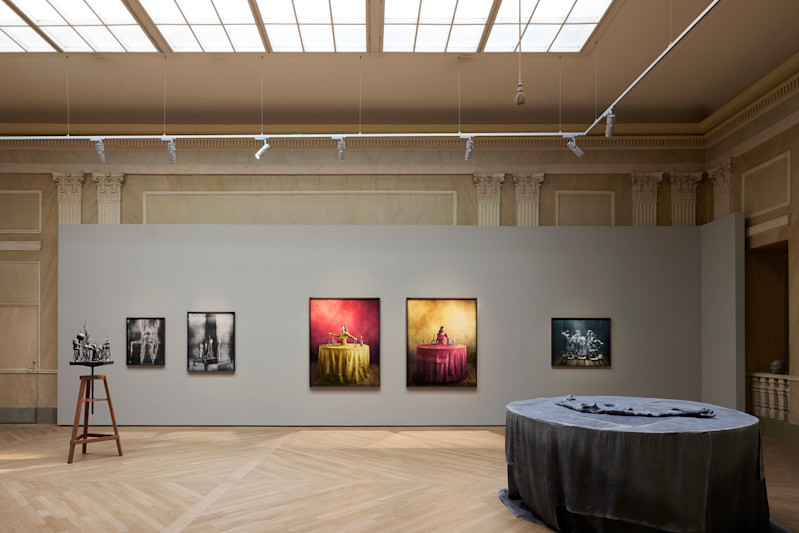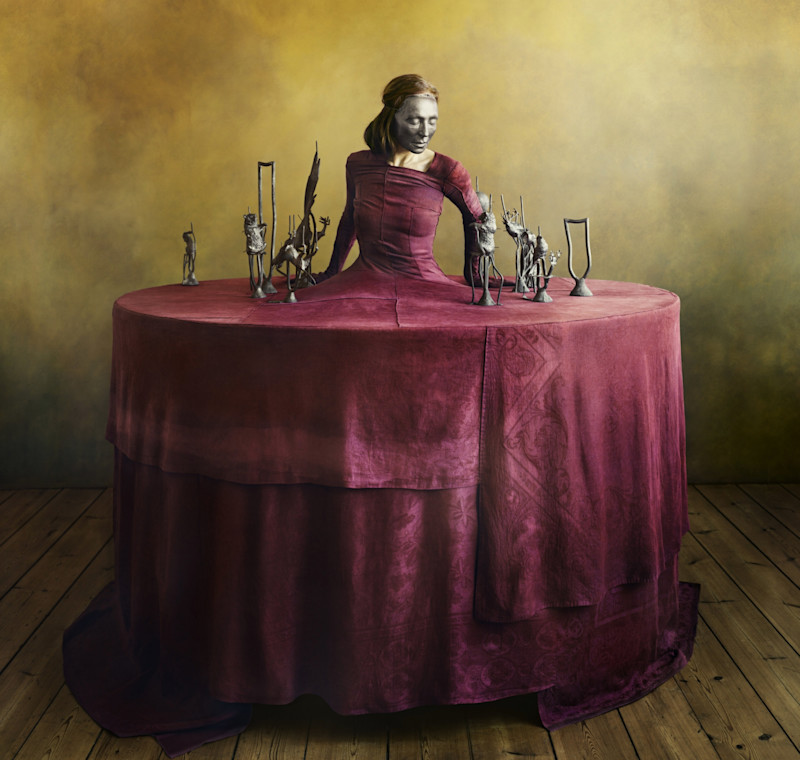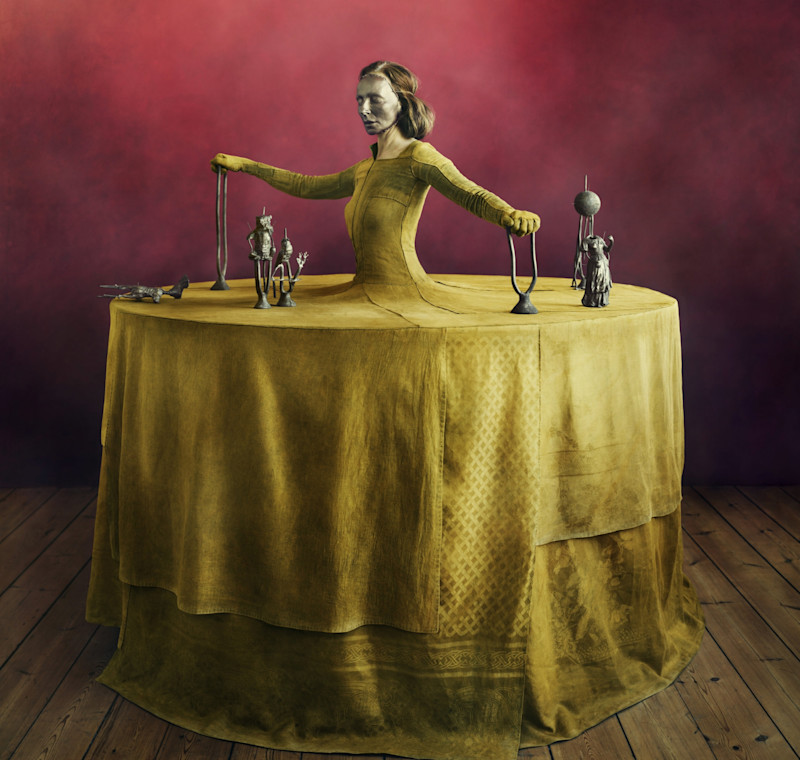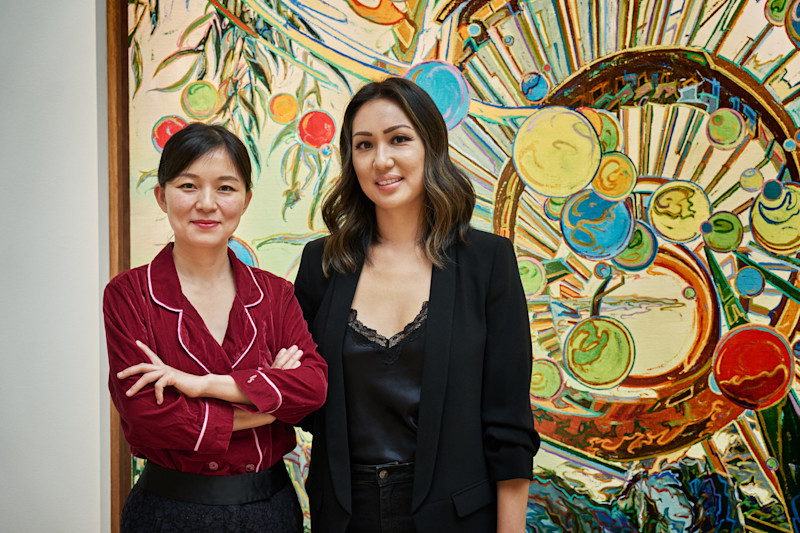You’re Free to Relate to Reality as You Wish, An interview with Denise Grünstein
Interview
November 15, 2018

In Dreams, You’re Free to Relate to Reality as You Wish
An interview with Denise Grünstein by CFHILL’s Paulina Sokolow
The table is a recurring motif in your photographs. What is its significance in your work?
A table is a surface we can relate to, like a room or a stage. The table symbolises the place and the things you want to focus your narratives on. Empty spaces and surfaces have always been attractive to me, and when I work with smaller objects, a table is a natural place for me to position them on. It’s also a symbol of home, of domestic life. Women’s work. A lot of important conversations are held around tables. They are a gathering point for our relationships. Perhaps this also has something to do with my own upbringing. My need for an anchor in my life. We moved abroad when I was seven, from Finland – our family had Jewish roots and came from Russia – to Sweden. I still carry the dreams with me.
What is it about dreams that interests you so?
In dreams, you’re free to relate to reality as you wish. Photography has a complicated relationship to the unreal. I have to conceal reality to get away from it. The reality I want to create is a parallel path, a journey through the subconscious. I work intuitively, and I like to keep things somewhat open, so that I can surprise myself. I set a table with the various ingredients that interest me, I choose the location for the events, and then I often allow chance to enter into the equation. By chance, I mean ideas that come to you suddenly when you meet people, found objects, or even something as basic as a shift in the light. That’s where photography is at its most interesting. I love to walk around antique shops. A beautiful piece of fabric with a story to tell can serve as the basis for an entire series. My ideas often start out just like that. It’s not until later, when the process is unfolding, that the meaning of whatever I’m doing becomes clear to me. The important thing for me is to be exploring. I don’t want to know where it’s going to lead me ahead of time.

Photo: Denise Grünstein, Renaissance Red, 2018
Tell me about your new exhibition Casting, which you’ve been working on these last few years.
It has two separate origins, but I can’t remember which of them came first. The idea was born during a trip I made to Bombay with Emelie Janrell, who sewed the crinolines for my Nationalmuseum series. What if we made an even larger crinoline, as big as a table even, which we could place things on?
We gave our associations free reign, and eventually, we came up with a figure who was sewn into a round table. At the same time, I was looking for interesting objects, and came across Viennese bronze miniatures – a kind of mid-19th century crafts object that often depicted different animals. I’ve always enjoyed well-made miniatures. Because I use large format cameras, and the negatives and the miniatures are both so detailed, you can undo the whole concept of size in the pictures. It was when I found those Viennese bronzes that these two paths became intertwined. The dress-table woman, who just kept growing and growing until she became gigantic in relation to the figurines. The interplay of their proportions. It was an image that came to me that I wanted to realise.
Who is the table woman?
Marta Oldenburg (the model who has been featured in Denise Grünstein’s series since the early 2000s) asked me, “what is it about?”
We decided that she was a character who anybody could interpret based on their own platform. She is omnipotent, yet a prisoner. Immortal and powerful, but fettered. As a photographer, my own hands have been tied to a certain degree, too, because of how few components I’ve had to work with. A limited number of objects, a face mask with a single expression, and a fixed position within the studio.
But I’ve enjoyed the challenge of finding variety within this set of limitations. It becomes a set of variations on a theme – my work is moving more and more in that direction. There is also a duality here, between the large and the small. I had recurring dreams about large and small as a child. I was like Gulliver: the world around me was tiny, and then it was the other way round and I was tiny, on the peak of a high mountain. There is something compelling there, between those two positions.

Photo: Denise Grünstein, Renaissance Yellow, 2018
And what about the title, Casting?
This whole project is about reproduction. About making several of something. It’s an inherent feature of the technology of photography. The print is an inverted reproduction of the negative. The bronze figurines I used were recast in bronze. The miniature studio is a model of my real, large studio. We also made a cast of Marta’s face, so that we could copy it. There are quite many stages of reproduction involved. Eventually, the fixed positions gave rise to a desire to film motion. I wanted the figure to spin round and round, like a music box, with no beginning and no end. A metaphor for the circulatory motion where the woman is the hub, at the centre. What unfolds is seemingly mundane.
Is she setting a table, or is she controlling the world?
Perhaps. Imagine how wonderful it would be to be able to send a replica of yourself out



